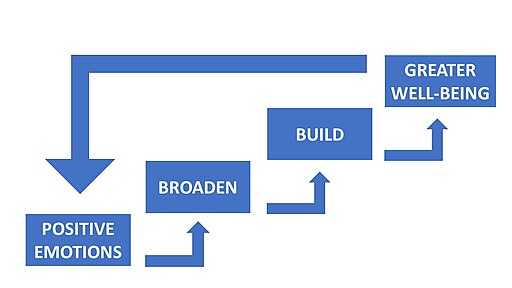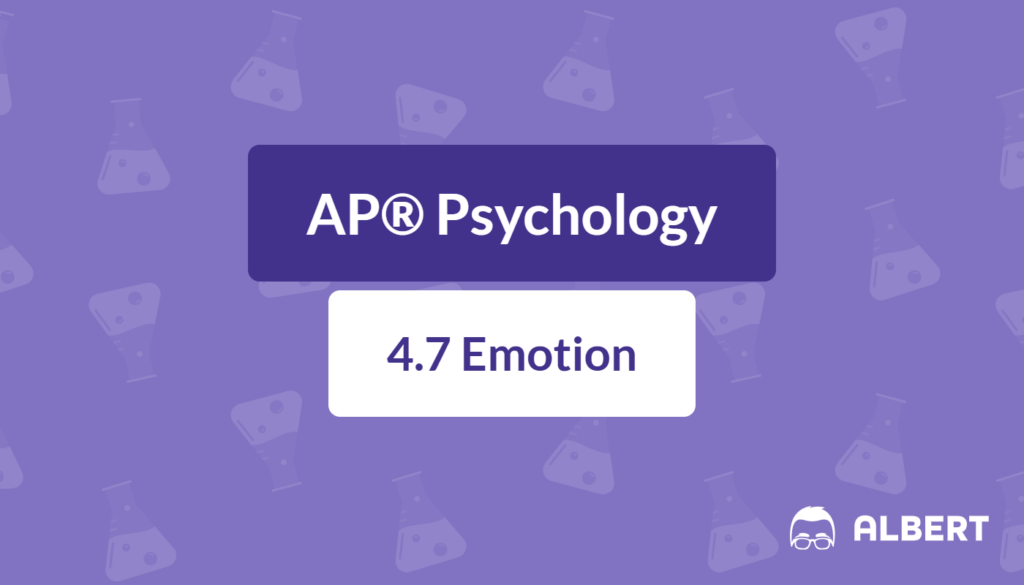What We Review
Emotions play a powerful role in everyday life. They shape thoughts, guide decisions, and influence interactions with others. Therefore, understanding emotions is necessary for anyone interested in the field of psychology, particularly the psychology of emotion. Emotions are not only about feelings; they also connect physiological reactions and cognitive processes. This article introduces the definition of emotion, several theories of emotion, the broaden-and-build theory, and how social norms shape emotional expression.
Introduction
Studying emotions helps psychologists explain how individuals respond to changing situations. The Psychology of Emotion involves exploring why certain events make people happy, sad, or afraid. These insights are important because emotions can affect mental health, motivation, and relationships.
A deeper look at emotion reveals its complexity: it involves physical reactions, such as increased heart rate, and cognitive factors, such as thinking through what triggered those reactions. By examining various theories and real-world applications, it becomes easier to see why emotions affect behavior and mental processes in significant ways.
Defining Emotion
Emotions can be understood as intense mental states that combine physiological and mental components. They differ from reasoned knowledge because emotions typically happen quickly, often before logical thought has time to intervene. Emotions reflect both internal and external influences. Unlike knowledge, which is based on learned facts, emotions often arise from bodily cues and personal interpretations.
For instance, when a student anticipates an upcoming exam, there may be tension or worry. These feelings do not stem from factual reasoning alone. Instead, they come from a combination of bodily sensations (e.g., a racing heart) and mental preparation (e.g., thinking about possible outcomes).
Example: Short Scenario
Step-by-Step Breakdown:
- Trigger: A teacher announces a surprise quiz.
- Physiological Response: The student’s heartbeat speeds up.
- Cognitive Appraisal: The student worries about being unprepared.
- Emotional Experience: Anxiety or fear.
In this example, the emotion of anxiety emerges from an internal sense (bodily stress) and external context (the surprise test). This process shows how emotions depend on both the body and mind.
Theories of Emotion
Researchers have proposed multiple theories of emotion to define and explain emotion. Some theories suggest that bodily changes happen first, followed by a mental interpretation. Others propose that physiological responses and emotional awareness can occur at the same time.
Although this topic is complex, one way to simplify it is through an equation:
E = P + CHere, E stands for emotion, P for the physiological response (such as sweating, faster heartbeat), and C for the cognitive label (such as identifying an event as exciting or frightening).
Facial-Feedback Hypothesis
One well-known line of research, the facial-feedback hypothesis, suggests that making specific facial expressions can shape how individuals actually feel. For example, smiling on purpose might lead to genuinely happier feelings.
Example: Facial-Feedback Study
- Hypothesis: Changing facial expressions can influence emotional states.
- Study Design: Participants watched videos that were sad, humorous, or neutral. Half of the participants were asked to hold a pen between their teeth, creating a forced smile.
- Observations: Those with the forced smile often reported feeling happier or less distressed during the viewing.
- Conclusion: Body signals (like smiling) can sometimes lead to a shift in emotional experience.
Try practicing this idea: Placing a small pencil between the teeth to mimic a grin might bring out more positive feelings, though not all studies find strong effects. This mixed evidence shows the ongoing debate about whether physiology drives cognition or if both happen simultaneously.
The Broaden-and-Build Theory
Positive emotions often lead to more flexible thinking, creative ideas, and social engagement. This concept is at the core of the broaden-and-build theory of emotion. It suggests that pleasant feelings broaden a person’s perspective and build new skills.
- Positive Emotions: Encourage openness, exploration, and creative thinking.
- Negative Emotions: Narrow focus and prepare a person to handle immediate dangers or problems (e.g., fight-or-flight).

Example: Practical Application
- Scenario: A student learns about winning a small scholarship.
- Emotional Response: The student feels relief and excitement.
- Broadened Outlook: They decide to use new study methods, join a club, and apply for more scholarships.
- Contrast: Without this uplifting news, the student might stay worried and overlook new opportunities.
This example shows how a positive mood can expand someone’s awareness, leading to productive decisions and fresh ideas.
Universal Expression of Emotions
Many psychologists study whether certain emotions appear similarly across different cultures. Emotions such as anger, disgust, sadness, happiness, surprise, and fear are considered fundamental. Research often shows these expressions remain recognizable in various societies. However, some findings point toward cultural differences, suggesting that facial expressions and emotional signals can also be shaped by context.
Example: Happiness Across Cultures
- Scenario: People in different countries celebrate a personal achievement.
- Observation: Genuine smiles often appear, but how celebrations take place can differ (small family gatherings vs. community festivals).
- Explanation: Core emotions look similar, yet cultural norms influence how openly people share them.
- Conclusion: While expressions like smiling or laughing may be common everywhere, specific traditions or behaviors vary across cultural settings.
This overview highlights the possibility that there are shared emotional expressions, but they might not always be displayed the same way.
Social Norms and Emotional Expression
Emotional expressions are not entirely universal. Societies have rules about how individuals should show emotions in different situations. These guidelines, called display rules, might dictate whether someone hides anger, appears calm, or smiles politely.
- Culture: Some societies encourage open displays of sadness, while others expect people to remain stoic.
- Gender: Men and women in certain cultures might be taught to express or suppress specific emotions.
- Age: Younger children may show strong emotions, but teens and adults often learn to regulate them in social settings.
Key Terms: Display Rules and Elicitors
- Display Rules: Social norms that determine how emotions should be expressed.
- Elicitors: Events or cues that trigger specific emotional responses.
Example: Emotion Regulation Scenario
- Scenario: At a memorial service, men and women receive news of a shared loss.
- Different Reactions: Women may be allowed to cry openly, while men feel pressure to remain composed.
- Underlying Reason: Society or family traditions may imply that men need to look strong, and women can show greater emotional vulnerability.
- Outcome: Both groups experience sadness, but social rules impact how that sadness is shown.
This scenario illustrates how context and social norms can guide or restrain emotional displays. It also shows that cultures have their own set of guidelines that can vary widely, even among subgroups in the same society.
Conclusion
Emotions are complex but crucial for human behavior and mental processes. They reveal the interplay of bodily reactions, personal experiences, and cultural factors. The theories of emotion offer different explanations for how individuals recognize, interpret, and show feelings. Meanwhile, the broaden-and-build theory highlights how positivity can expand possibilities, while negativity often limits them.
Understanding the universal expression of emotions shows there may be shared aspects of emotional display across cultures, but research also notes variations. Finally, display rules and elicitors shape emotional expression by dictating when, how, and why emotions are suitable to show.
These concepts encourage a deeper appreciation for the Psychology of Emotion. By recognizing how social factors and biological processes combine, one gains insight into both personal emotional experiences and how peers might feel in similar circumstances.
Quick Reference Chart
Below is a brief chart of key vocabulary and definitions from this article.
| TERM | DEFINITION |
| Emotion | A complex psychological state involving bodily reactions and mental evaluation. |
| Theories of Emotion | Different frameworks explaining whether the physical or cognitive aspects of emotion come first (or act simultaneously). |
| Facial-Feedback Hypothesis | Suggests that facial movements can influence emotional experiences. |
| Broaden-and-Build Theory | Proposes that positive emotions expand awareness and encourage creative actions, while negative emotions narrow focus. |
| Universal Expression of Emotions | The idea that some emotions (e.g., fear, happiness) are recognized across diverse cultures, but may show cultural variations. |
| Display Rules | Social norms that govern when and how emotional expressions are acceptable. |
| Elicitors | Events or cues that spark certain emotional responses. |
Sharpen Your Skills for AP® Psychology
Are you preparing for the AP® Psychology test? We’ve got you covered! Try our review articles designed to help you confidently tackle real-world AP® Psychology problems. You’ll find everything you need to succeed, from quick tips to detailed strategies. Start exploring now!
- Theories of Motivation: AP® Psychology Review
- Social Cognitive Theory: AP® Psychology Review
- Trait Theory of Personality: AP® Psychology Review
Need help preparing for your AP® Psychology exam?
Albert has hundreds of AP® Psychology practice questions, free response, and full-length practice tests to try out.








